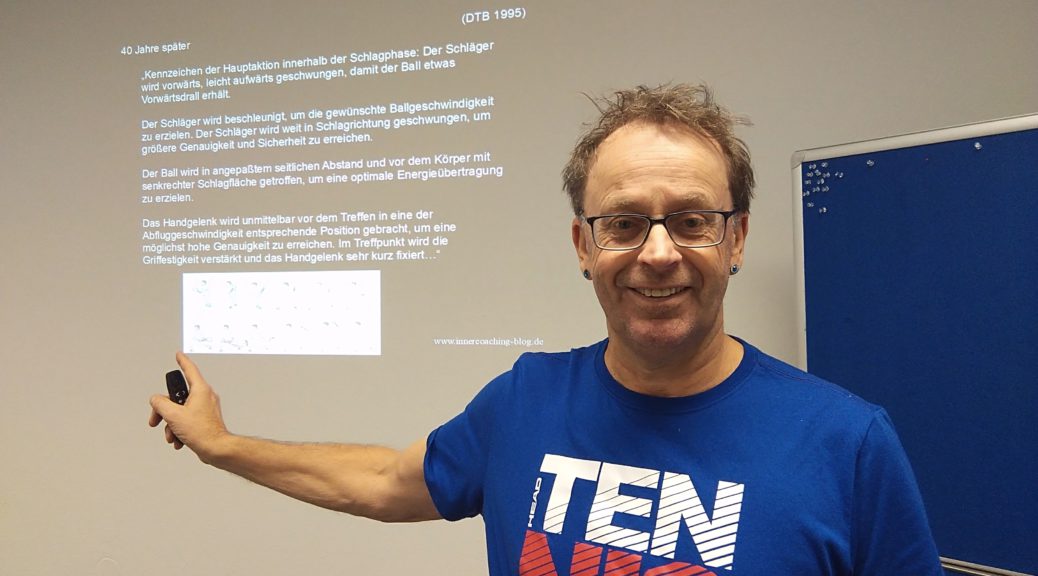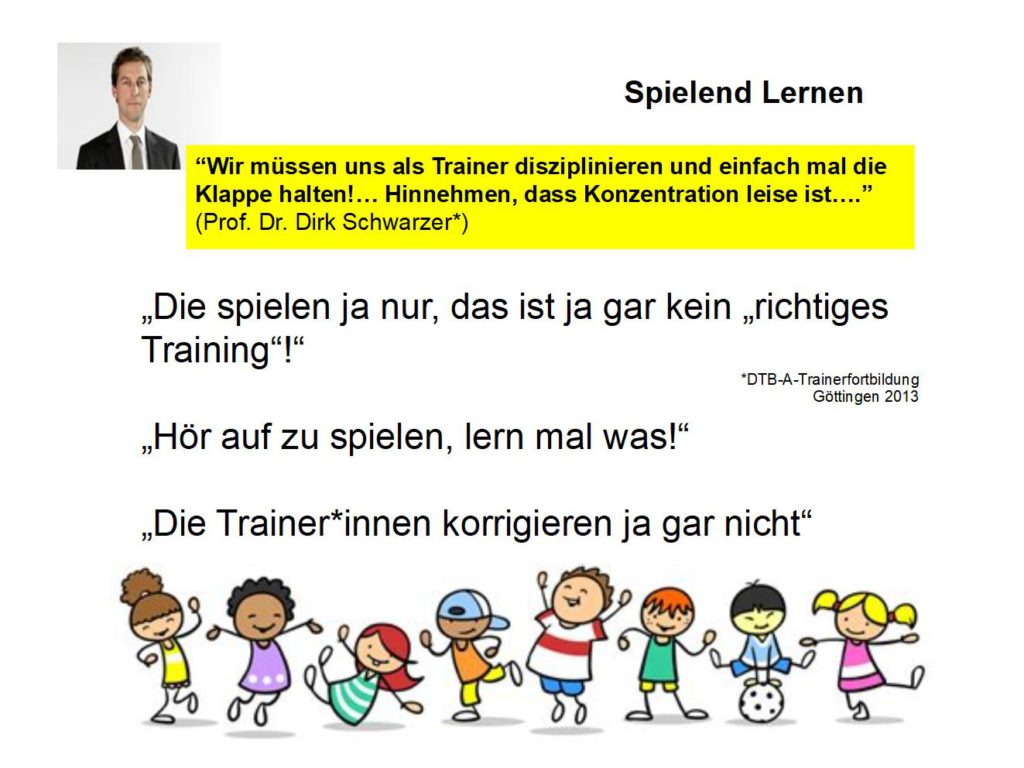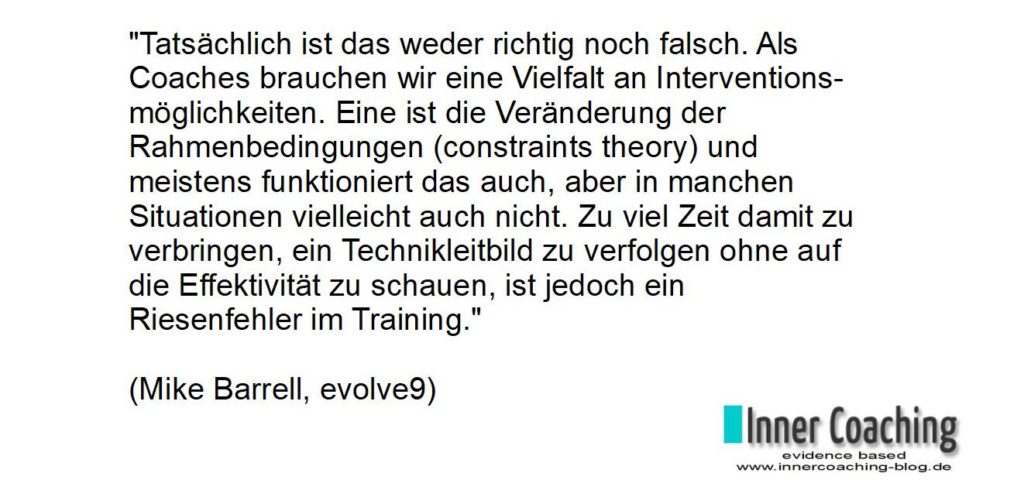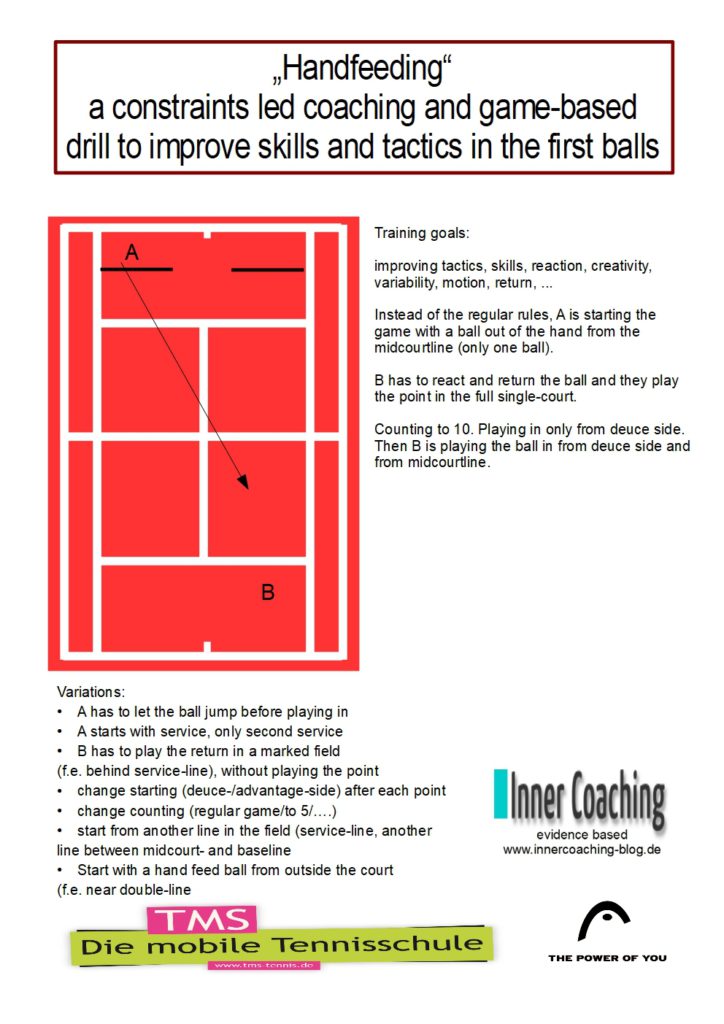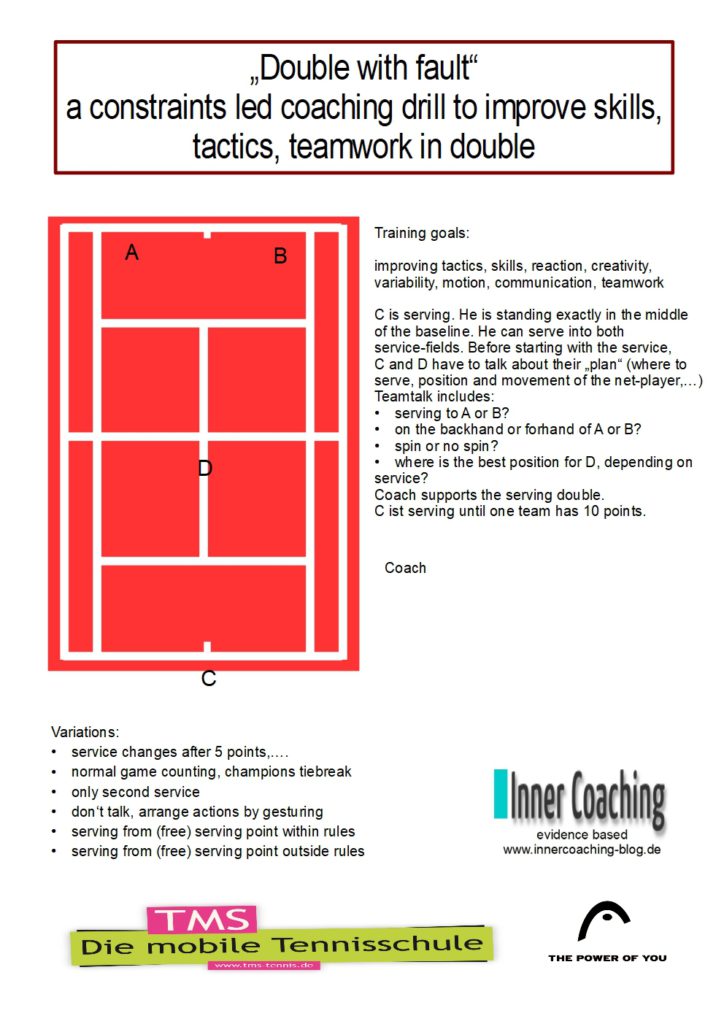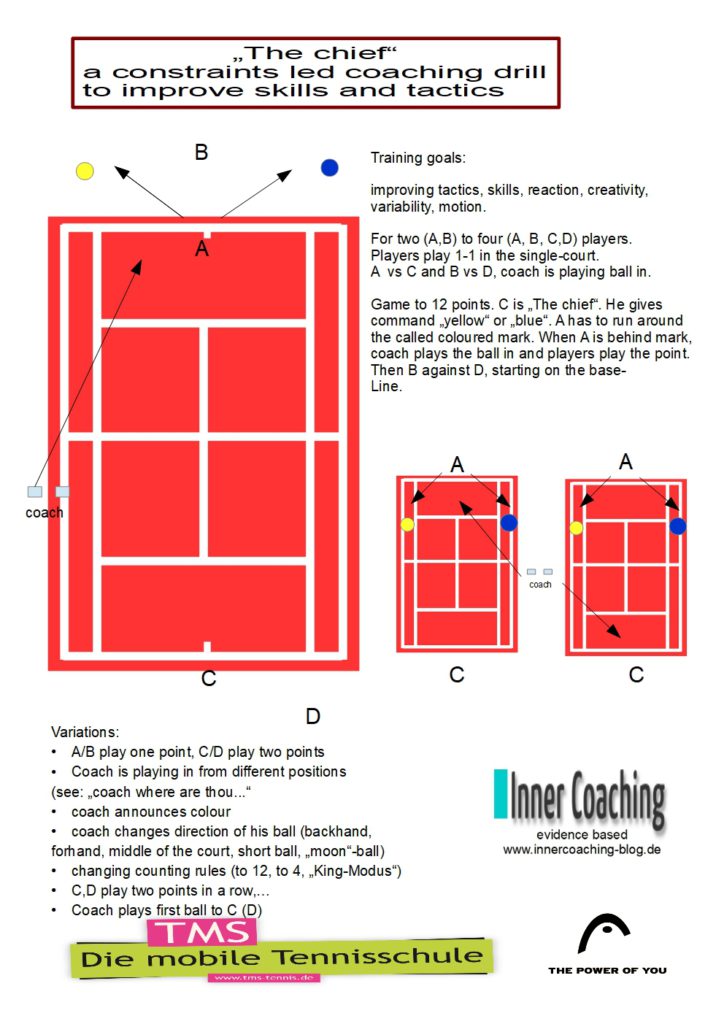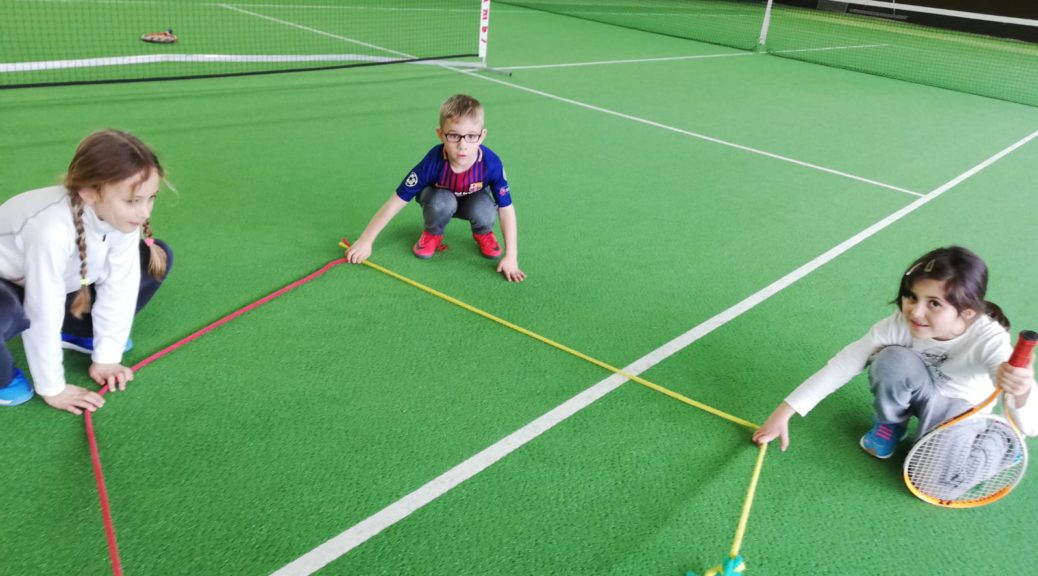Die Vorträge beim Bayrischen Tennisverband (BTV) und beim Württembergischen Tennisbund (WTB) über „Neue Wege im Tennistraining – vom Inner Game zum Differenziellen Lernen“ hatten immer etwas Gutes: das Feedback der Teilnehmer*innen, jeweils C/B-Trainer*innen bei der Trainer*innenfortbildung des Verbandes.
Die Reaktionen reichen von ungläubigem Staunen über heftige Kritik bis zu heller Begeisterung und Zustimmung.
Ich habe mich nun entschlossen, den Vortrag in ein Video zu packen, da das Thema aktueller denn je ist und es höchste Zeit ist, dass die wissenschaftlichen Erkenntnisse zum motorischen Lernen auch bei den Tennistrainer*innen und an der Basis ankommen. Leider lässt sich im Tennistraining noch viel zu häufig der alte „methodische Traditionalismus“ mit einer starken Technikorientierung vor spielerischem und selbstbestimmten Lernen beobachten.
Der Vortrag und die im Schnellverfahren beschriebenen „Neuen Wege“, die manchmal schon ältere, aber nicht wertgeschätzte Trainingsmethoden sind, sollen Kolleg*innen anregen, ausgetretene Pfade zu verlassen und Wege zu gehen, die auch ihnen die Arbeit in einem immer komplexer werdenden Bereich erleichtern können.
Das komplette Video soll bis Ende Januar veröffentlicht werden. Solange empfehle ich Euch diesen Blog und den Inner Coaching Kanal auf youtube.
